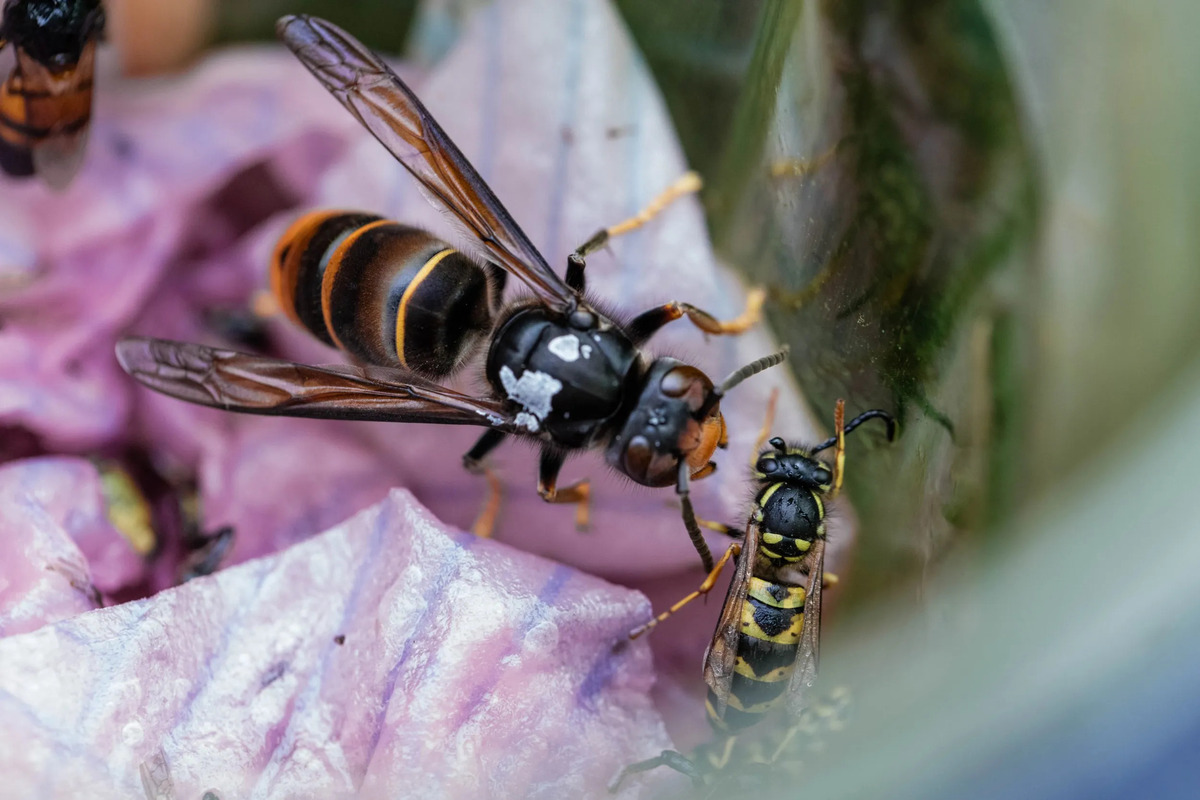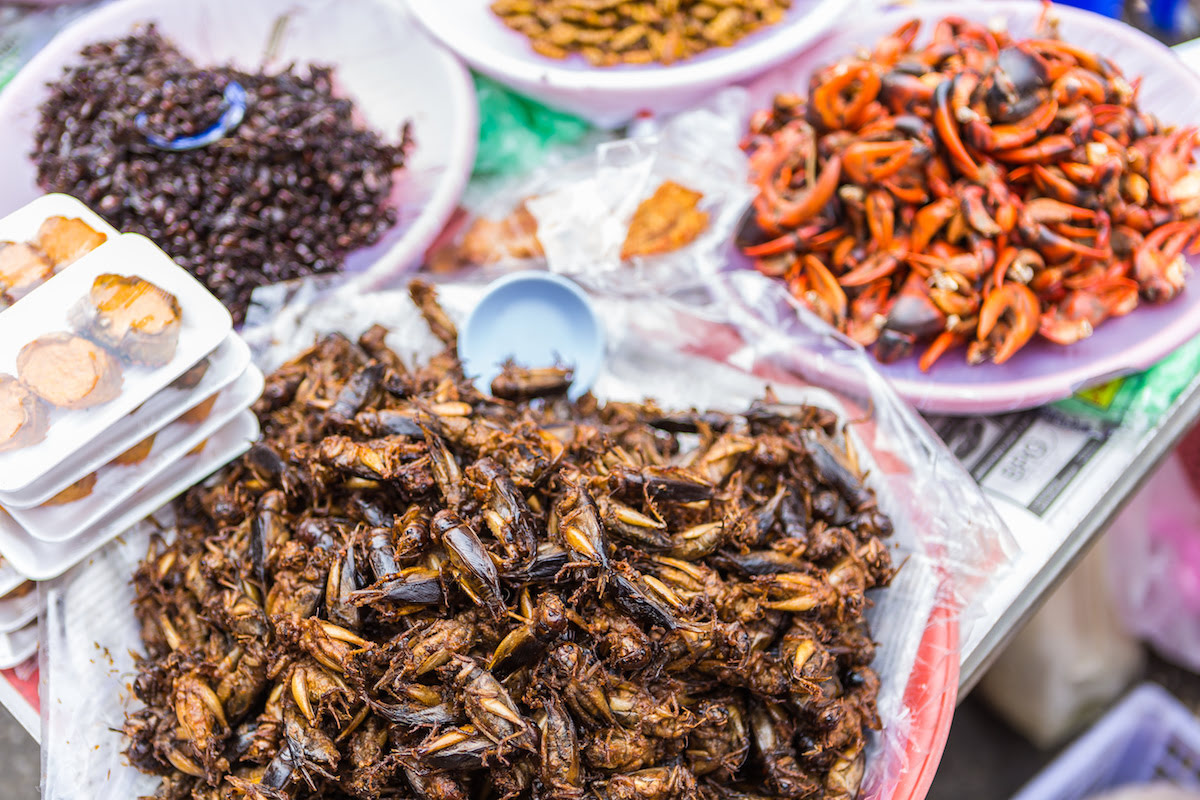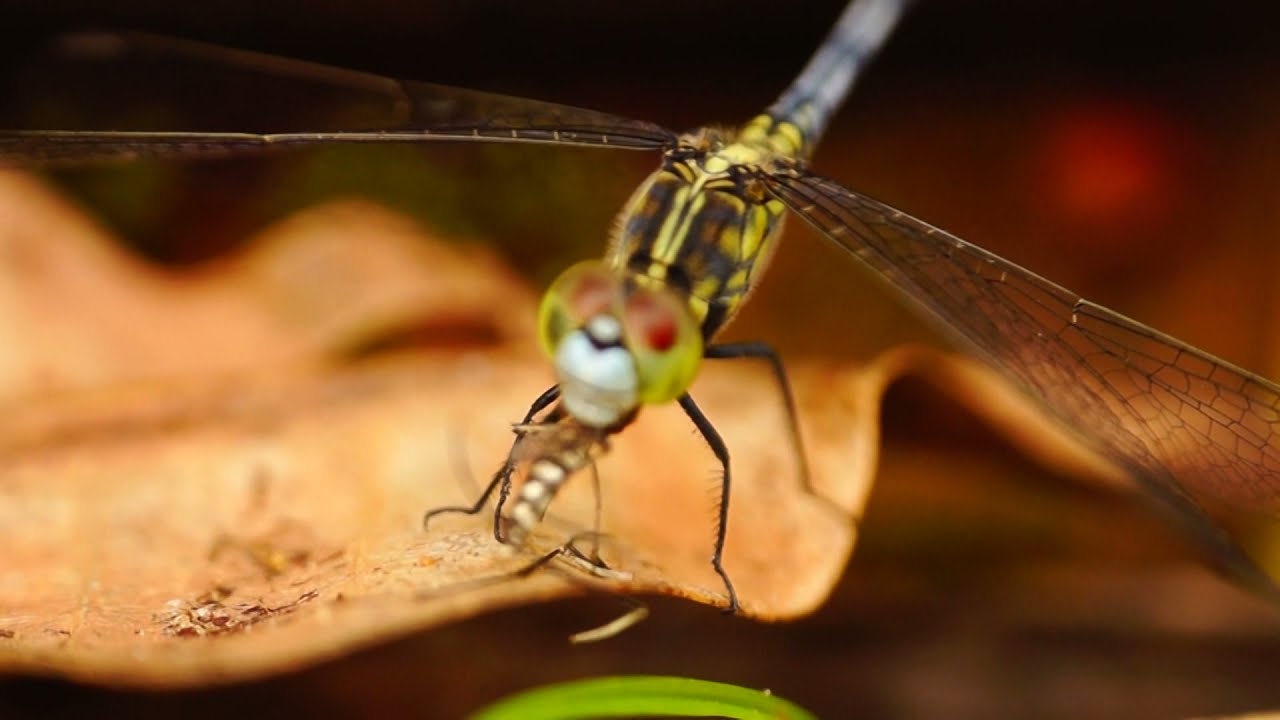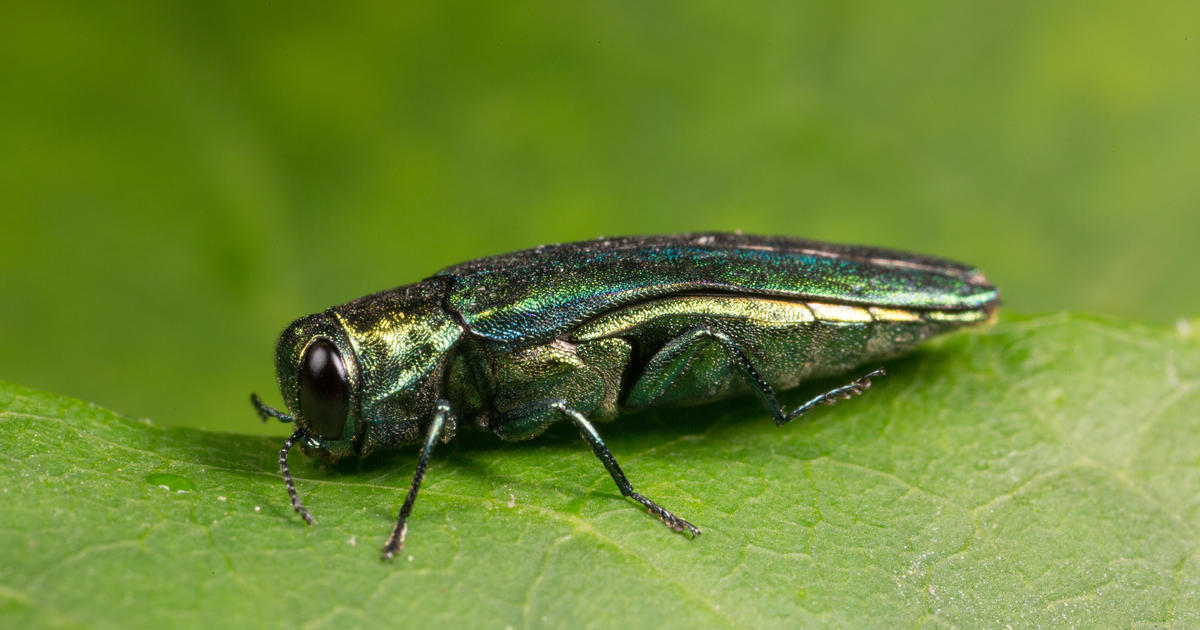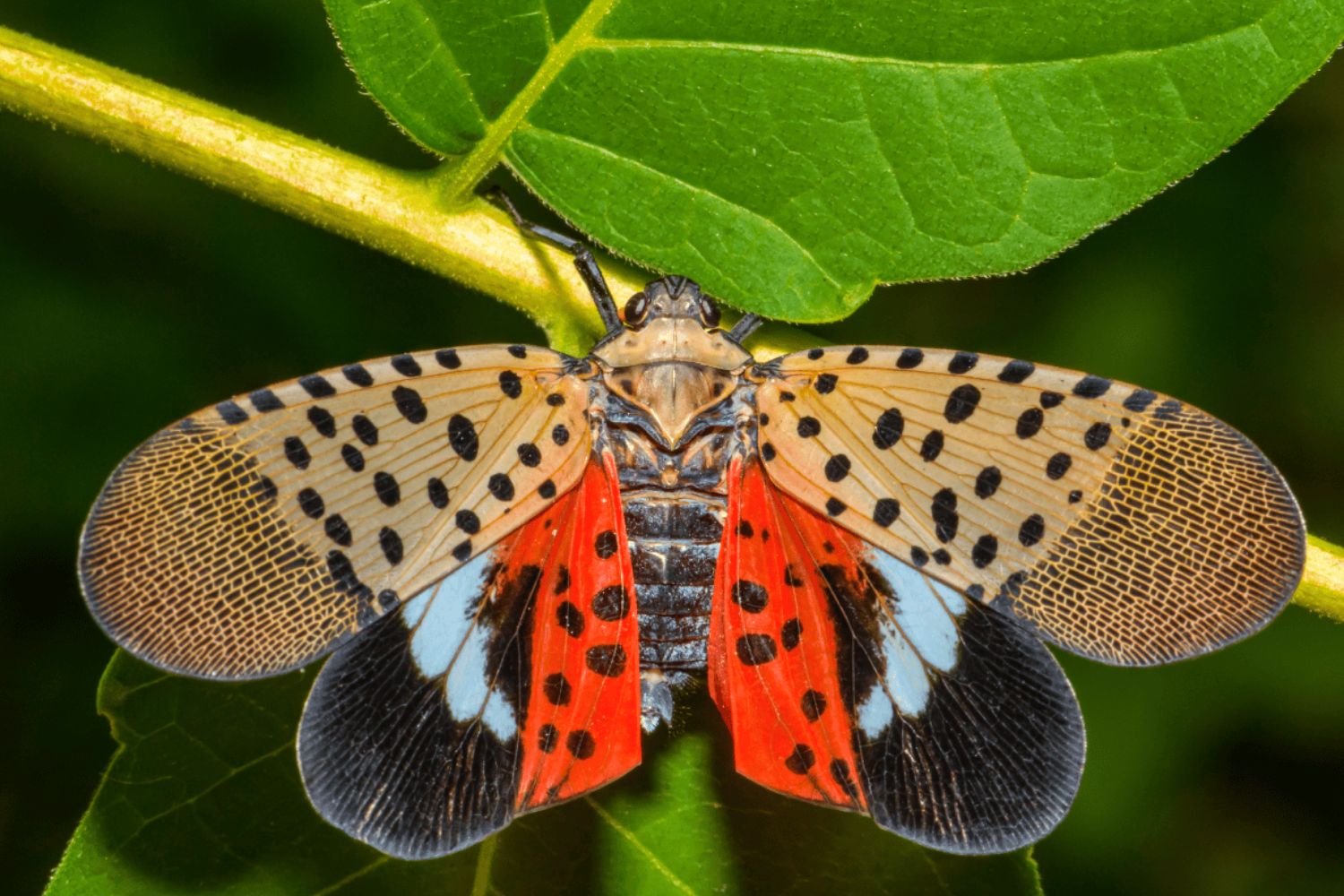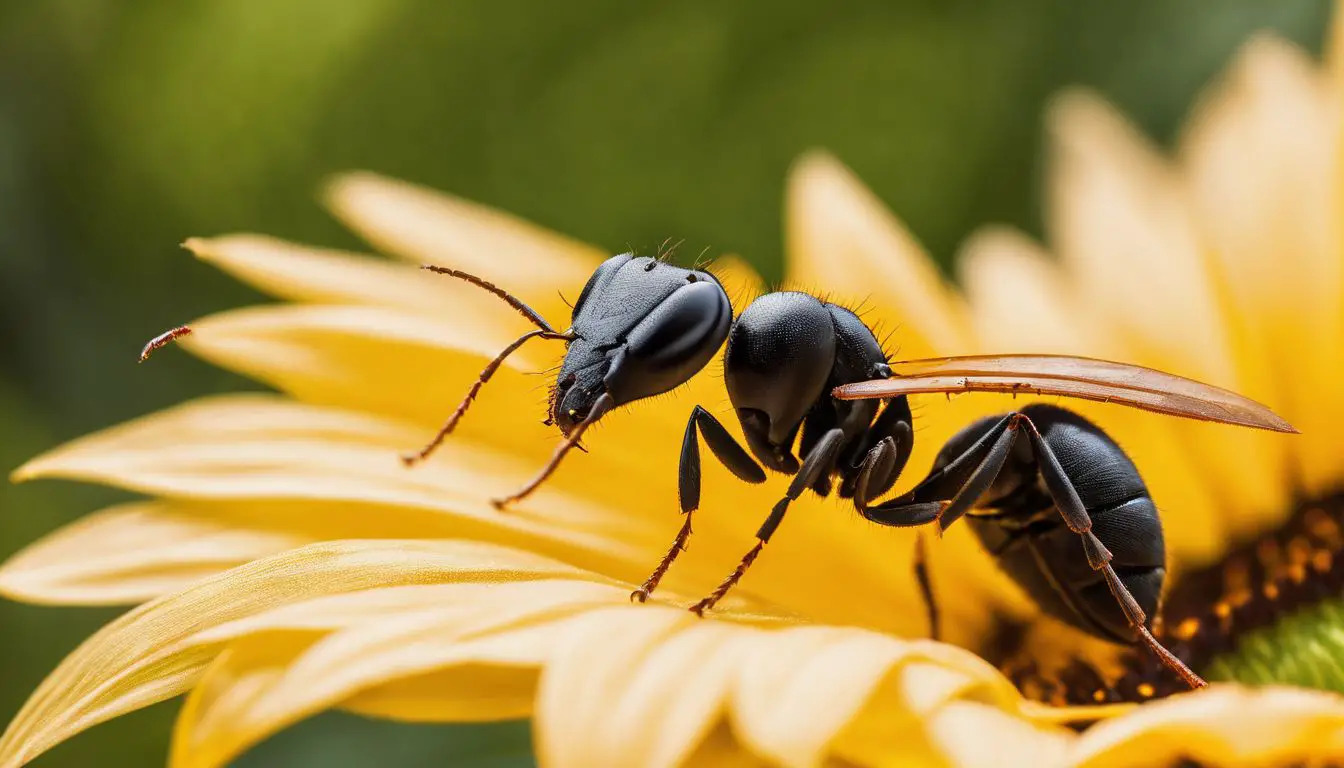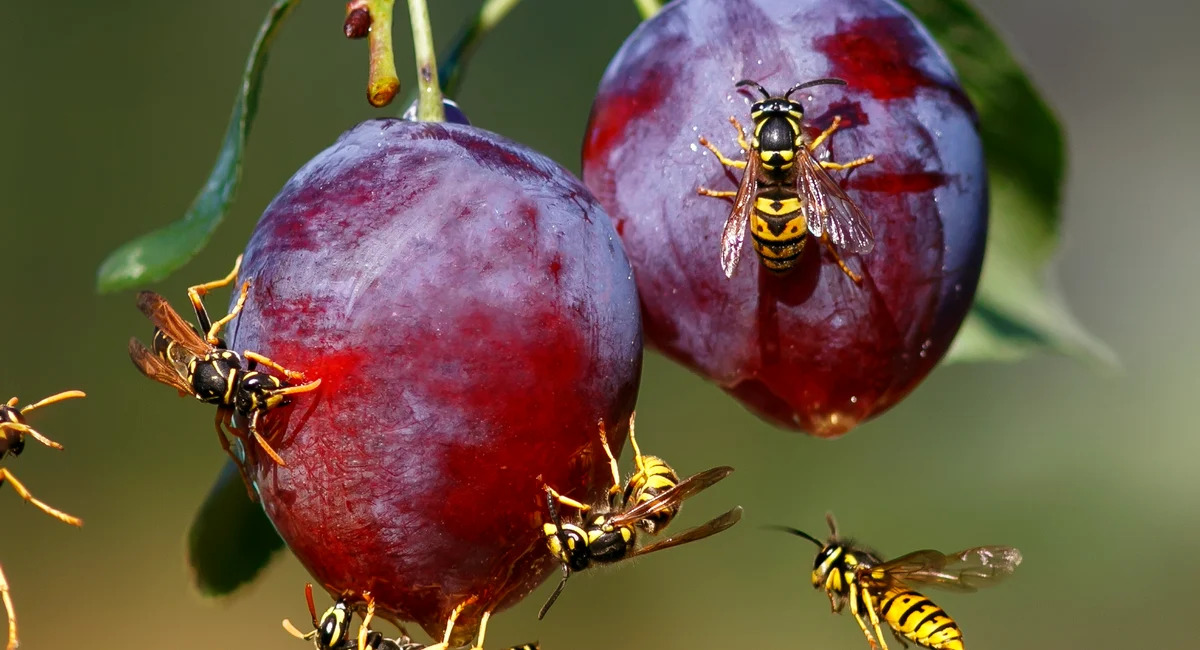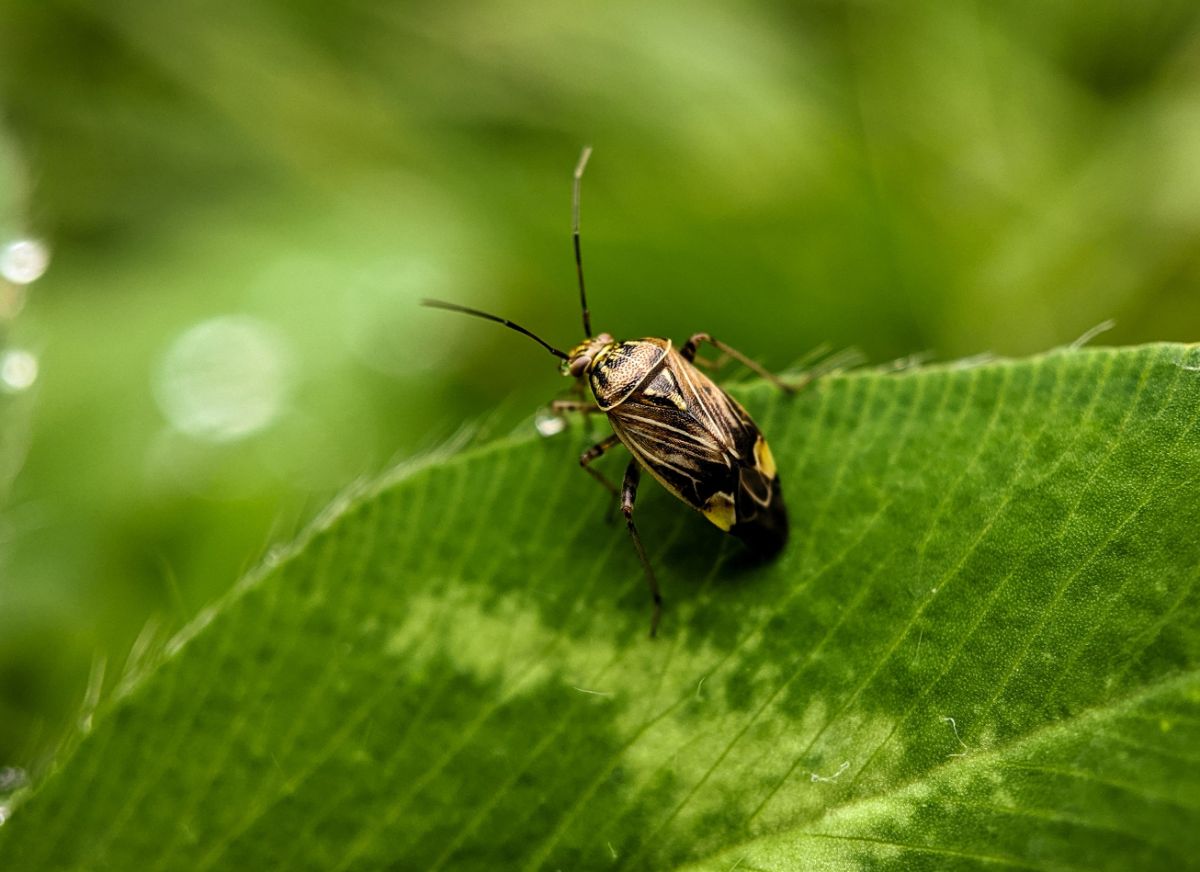Home>Gardening News and Trends>Latest News>What Insects Eat Termites
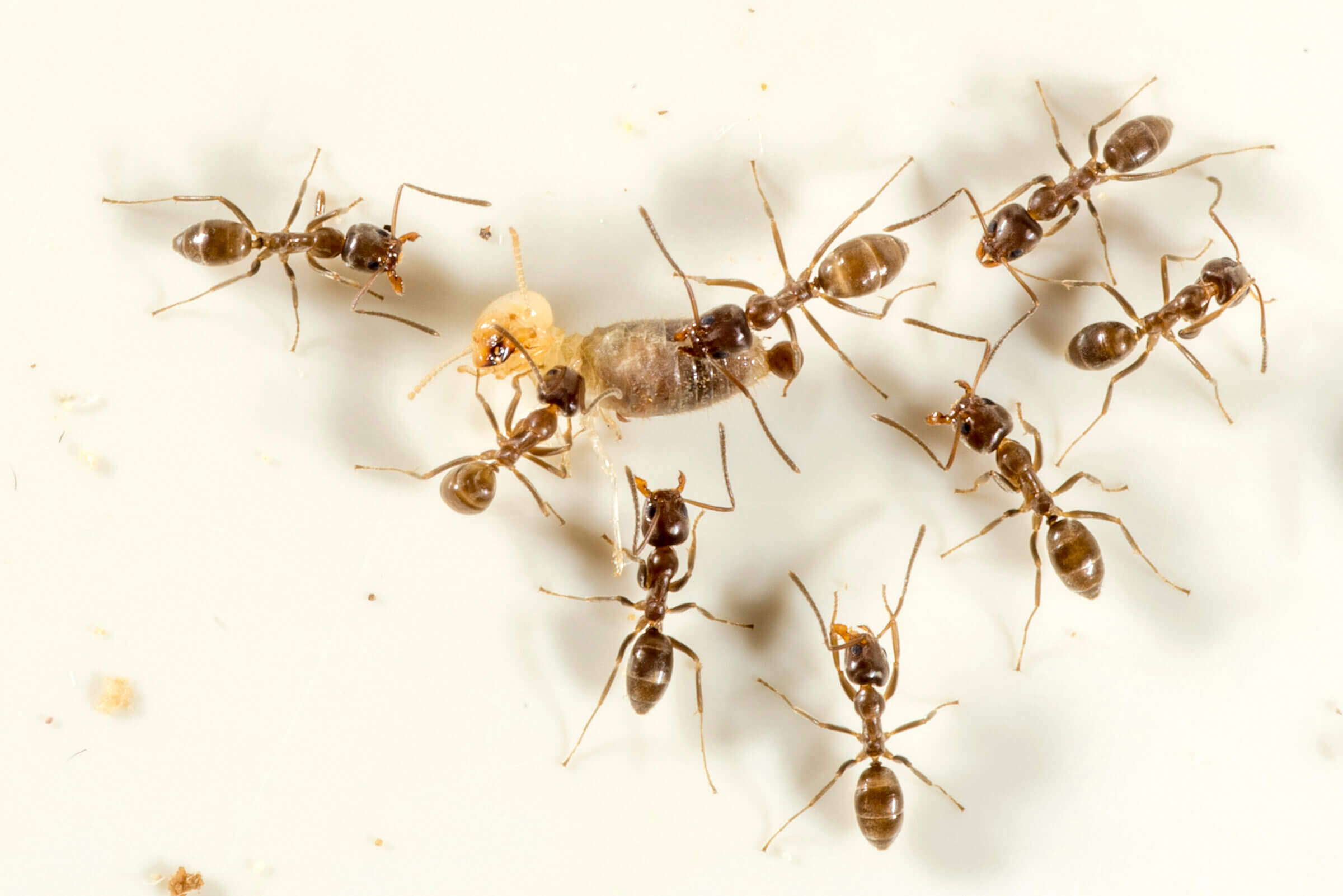

Latest News
What Insects Eat Termites
Published: December 11, 2023
Discover the Latest News on What Insects Eat Termites
(Many of the links in this article redirect to a specific reviewed product. Your purchase of these products through affiliate links helps to generate commission for Chicagolandgardening.com, at no extra cost. Learn more)
Table of Contents
Introduction
Termites, often referred to as the “silent destroyers,” are small but mighty insects that can wreak havoc on homes and structures. These wood-feeding creatures have a voracious appetite and can cause significant damage if left unchecked. However, despite their reputation as pests, termites are an essential part of the ecosystem and play a vital role in the decomposition of dead plant material.
In this article, we will explore the fascinating world of termite diets and the predators that feed on these industrious insects. From other insects to birds, mammals, and even reptiles, there is a diverse range of creatures that consider termites a tasty meal.
Understanding the natural predators of termites can provide valuable insights into their ecological importance and help us find sustainable ways to manage termite populations without resorting to harmful chemical treatments. So, let’s delve into the intricate web of termite food chains and discover who preys on these tiny wood-chomping pests.
Termite Diet Overview
Termites are primarily known for their appetite for wood, but their diet extends beyond just that. These insects feed on various forms of plant material, making them important decomposers in ecosystems. Their ability to break down cellulose, the main component of plant cell walls, allows them to obtain nutrients that are otherwise difficult to access.
The main source of food for termites is dead plant matter, such as logs, branches, and rotting vegetation. They are particularly attracted to moist and decaying wood, as it provides them with the necessary nutrients and moisture they need to survive.
While wood is their primary food source, termites also consume other plant materials, including leaves, grass, and even fruit. In some cases, termites may even feed on the insulation and paper products found in human-made structures, making them a nuisance for homeowners.
Interestingly, termites have a symbiotic relationship with microorganisms, such as bacteria and protists, that reside in their digestive systems. These microorganisms help break down the cellulose into simpler compounds that the termites can digest and derive energy from.
Overall, termites have a diverse and adaptable diet, allowing them to thrive in various environments. Whether it’s feasting on fallen trees in the forest or munching on the wood framing of a house, these insects play a vital role in the ecosystem by recycling organic matter and returning nutrients back into the soil.
Predators of Termites
Despite their ability to cause significant damage to buildings and structures, termites are not invincible. They have a variety of predators that rely on them as a food source. These predators help to keep termite populations in check and maintain a balance in the ecosystem.
Let’s explore some of the common predators of termites:
- Insect Predators: Many other insects view termites as a delectable treat. Ants, for example, are fierce predators of termites. They have sophisticated methods of locating termite colonies and launching raids to capture and consume them. Beetles are another group of insects that prey on termites, with certain species specifically evolved to infiltrate termite colonies.
- Bird Predators: Birds are also known to have a taste for termites. In particular, woodpeckers are well-equipped to extract termites from their nests in timber. These birds use their strong beaks to drill into wood and then use their long tongues to extract the termites.
- Mammal Predators: Various mammals consider termites a part of their diet. For instance, anteaters have specialized snouts and sticky tongues that allow them to easily capture termites from their tunnels. Tamanduas and aardvarks are other examples of mammalian termite predators.
- Amphibian and Reptile Predators: Frogs, toads, and certain species of lizards have been observed preying on termites. These predators typically feed opportunistically on termites they encounter while foraging in or near termite habitats.
- Other Animals that Eat Termites: Termites are also part of the diet for various other animals, such as spiders, scorpions, and some species of fish. These predators may not exclusively rely on termites as their primary food source but will consume them when the opportunity arises.
It is important to note that while these predators play a role in controlling termite populations, they are not always sufficient in eliminating the threat of an infestation. Effective termite management often requires a combination of natural predators, preventive measures, and, in some cases, professional pest control intervention.
Insect Predators
Termites, despite being formidable pests, are not immune to the hunting prowess of other insects. In fact, there are several insect predators that target termites as a crucial food source. These predators have developed specialized adaptations and strategies to infiltrate termite colonies and feast on their unsuspecting prey.
One of the most notable insect predators of termites is the ant. Ants are highly organized social insects that often engage in territorial battles with termites. They have sophisticated communication systems and work together to locate termite colonies. Once they find a colony, they launch coordinated attacks, overpowering and devouring the termites.
Certain species of beetles have also evolved to become specialized termite predators. These beetles have adaptations that allow them to infiltrate termite colonies undetected. They may mimic the pheromones of termites or have streamlined bodies that allow them to squeeze through narrow entry points. Once inside the colony, they feed on the termites, often targeting the most vulnerable individuals, such as the young or weakened workers.
Other insect predators, such as assassin bugs, mantises, and some species of wasps, also prey on termites. These insects use stealth and ambush tactics to capture and consume their termite victims. The assassin bug, for example, impales termites with its sharp proboscis and injects digestive enzymes into their bodies, turning them into a liquid that the bug can then ingest.
Interestingly, some insects have even formed symbiotic relationships with termites. Certain ant species, known as termite-tending ants, not only prey on termites but also cultivate and protect termite colonies. These ants provide protection and food to the termites in exchange for access to the termite’s nest, where they can feed on the termite excrement and fungal gardens that termites cultivate.
Insect predators play a vital role in controlling termite populations and maintaining the balance in the ecosystem. They help regulate termite numbers and prevent excessive damage to vegetation and infrastructure. However, it’s important to note that when it comes to termite infestations in human-made structures, professional pest control intervention may be necessary to effectively eliminate the problem.
Bird Predators
When it comes to feasting on termites, birds are highly skilled predators with their own unique strategies for catching and consuming these small insects. Several bird species have developed specialized adaptations to extract these tasty morsels from their nests and tunnels, making them formidable termite hunters.
One notable bird predator of termites is the woodpecker. With their strong beaks and long, sticky tongues, woodpeckers are adept at extracting termites from their tunnels hidden within the wood. They use their sharp beaks to drill into the wood, creating holes that expose the termite galleries. With their tongues, woodpeckers can probe into these galleries, collecting termites as they go.
Other bird species, such as barbets and honeyguides, also possess similar adaptations for extracting termites from their nests. These birds have evolved to take advantage of the termites’ defensive mechanisms, such as using sticky saliva or hardening their galleries. They use techniques like pecking and probing to access and consume the termites without much resistance.
Some bird species, like starlings and hornbills, are known to raid termite swarms. When termites take flight during their mating season, these birds flock together, skillfully intercepting and consuming them mid-air. It’s a spectacular sight to witness as hundreds of birds swoop and dive to catch their prey in a synchronized feeding frenzy.
Birds not only benefit from the nutritional value of termites, but they also provide an important ecological service. By preying on termites, birds help control their populations and minimize the potential damage they can cause. In agricultural settings, birds that consume termites can also help protect crops from termite infestations.
It’s worth noting that while birds are effective predators of termites, their impact on controlling termite populations may vary depending on the bird species, the abundance of termites, and the habitat in which they reside. In some cases, their foraging activities can even help distribute termites and their eggs to new areas, potentially leading to the spread of infestations.
Overall, birds are fascinating and important predators of termites. Their adaptations and hunting techniques allow them to exploit these small insects as a valuable food source. By playing this role in the ecosystem, birds contribute to the regulation of termite populations and help maintain the balance of nature.
Mammal Predators
Termites are not only targeted by insects and birds but also by various mammals that have adapted to include them in their diet. These mammal predators have developed unique traits and strategies to locate and capture termites, making them effective hunters of these tiny, wood-munching insects.
One of the most well-known mammalian predators of termites is the anteater. Anteaters have long snouts, sticky tongues, and strong claws that enable them to access termite nests and feed on the unsuspecting insects inside. They use their powerful forelimbs to break open termite mounds or tear apart decaying logs to reach their tasty prey.
Another mammal predator with a penchant for termites is the tamandua, a species of anteater. Like their larger cousins, tamanduas have specialized snouts and tongues that allow them to probe into narrow crevices and extract termites. They are particularly skilled at locating and eating arboreal termites found in trees.
The aardvark, a unique mammal native to Africa, is also an avid consumer of termites. With their long, sticky tongues and powerful claws, aardvarks dig into termite mounds and devour the insects they find inside. They are known to consume large quantities of termites in a single feeding session.
There are some primate species that include termites in their diet as well. For example, certain species of monkeys, such as the vervet monkey and the capuchin monkey, are known to eat termites. They use their dexterous hands and nimble fingers to extract termites from their hiding places, displaying impressive foraging behavior.
Other mammalian predators of termites include certain species of bats, such as the termite-eating bat. These bats specialize in catching flying termites in mid-air, using their echolocation abilities to locate and snatch their prey. Some insectivorous bats also consume termites opportunistically as part of their varied diet.
Mammalian predators of termites play an important role in controlling termite populations in their respective habitats. By preying on termites, these mammals help regulate termite numbers and prevent excessive damage to vegetation. They have evolved unique adaptations to exploit termites as a food source, contributing to the ecological balance of their ecosystems.
Amphibian and Reptile Predators
While insects and mammals may be the more well-known predators of termites, amphibians and reptiles also play a significant role in keeping termite populations in check. These cold-blooded creatures have their own unique adaptations and hunting strategies to capture and consume termites as part of their diet.
Some amphibians, such as certain species of frogs and toads, have been observed preying on termites. These amphibians are typically found in habitats with abundant termite populations, such as marshes, wetlands, and forests. They use their long, sticky tongues to capture termites opportunistically as they forage for other small invertebrates.
Reptiles, including certain species of lizards, also include termites in their diet. For example, geckos and anoles are known to feed on termites as part of their omnivorous or insectivorous diet. These lizards use their agility and keen eyesight to detect and capture termites on the ground or in vegetation.
Some species of snakes have also been observed consuming termites. These snakes may take advantage of termite swarms or actively seek out termite nests to feed on the insects. Snakes use their unique body structure and hunting abilities, such as their ability to detect heat signatures and their ability to swallow large prey, to capture and ingest termites.
One notable example of a reptile that relies heavily on termites as a food source is the pangolin. Pangolins are scaly creatures known for their unique appearance and protective armor. They have long, sticky tongues that they use to extract termites from their nests. Pangolins are highly specialized termite predators, and their diet consists primarily of ants and termites.
Amphibians and reptiles play an important role in maintaining termite populations within their natural ecosystems. By preying on termites, they help regulate termite numbers and contribute to the overall balance of the ecosystem. These diverse creatures have evolved specific adaptations and behaviors to exploit termites as a food source, showcasing the complexity of predator-prey relationships in the natural world.
Other Animals that Eat Termites
Termites, with their abundance in many ecosystems, serve as a source of sustenance for various animals beyond insects, birds, mammals, amphibians, and reptiles. Several other animal species have developed an appetite for termites as part of their diverse diet.
Spiders, for instance, are known to feed on termites when given the opportunity. They weave intricate webs near termite colonies or hiding spots, capturing unsuspecting termites as they move about. Some species of spiders are even specialized termite predators, having evolved specific hunting techniques and behaviors to maximize their success.
Scorpions are also considered opportunistic predators of termites. These arachnids have evolved venomous stingers that they use to immobilize their prey, including termites. They may lie in wait near termite tunnels or venture into termite colonies to capture these small insects as they go about their activities.
Certain species of fish, primarily those found in freshwater habitats, are also known to consume termites. These fish may prey on termites that fall into the water or specifically target termites that live in submerged portions of trees or vegetation. Fish, such as the African lungfish, have been observed actively hunting termites as part of their feeding behavior.
Various insectivorous mammals, such as shrews, hedgehogs, and even some primates, may occasionally include termites in their diet. While termites may not make up a significant part of their overall food intake, they opportunistically consume these insects when encountered during their foraging activities.
It’s essential to acknowledge that the list of animals that eat termites extends beyond those mentioned in this article. The natural world is vast and diverse, and numerous animal species have found unique ways to incorporate termites into their diet.
By consuming termites, these animals contribute to the regulation of termite populations and the overall balance of ecosystems. The intricate network of predator-prey relationships ensures that termites, while an important part of various ecosystems, do not overwhelm their habitats and cause imbalances in the natural world.
Conclusion
Termites, with their remarkable ability to consume wood and play a crucial role in the ecosystem, are not without their predators. From insects to birds, mammals, amphibians, reptiles, and even other animals like spiders and fish, there is a diverse range of creatures that consider termites a delightful addition to their diet.
Insect predators, such as ants and beetles, employ various strategies to infiltrate and consume termites. Birds, including woodpeckers and barbets, possess specialized adaptations to extract termites from their nests. Mammals like anteaters and aardvarks use their long tongues and powerful claws to prey on termites, while certain amphibians and reptiles hunt termites opportunistically or develop specific adaptations for termite hunting. Other animals, including spiders, scorpions, fish, and some insectivorous mammals, also include termites in their diet when given the chance.
These predators play a vital role in controlling termite populations and maintaining the balance in ecosystems. By preying on termites, they help regulate termite numbers and prevent excessive damage to vegetation and man-made structures. They contribute to the recycling of organic matter and the redistribution of nutrients back into the environment.
Understanding the natural predators of termites not only enhances our knowledge of the intricate web of predator-prey relationships but also provides valuable insights into sustainable termite management strategies. By finding ways to coexist with termites and supporting their natural predators, we can reduce the reliance on harmful chemical treatments while still protecting our homes and structures.
While natural predators are essential contributors to termite control, it’s worth noting that professional pest control intervention may be necessary in cases of severe termite infestations in human-made structures. Combining natural predation with preventive measures and targeted treatments can effectively manage termite populations.
Ultimately, the existence of predators that feed on termites reminds us of the interconnectedness of life in the natural world. By appreciating the role of these predators, we can foster a greater understanding and respect for the delicate balance between termites, their predators, and the environments they inhabit.
